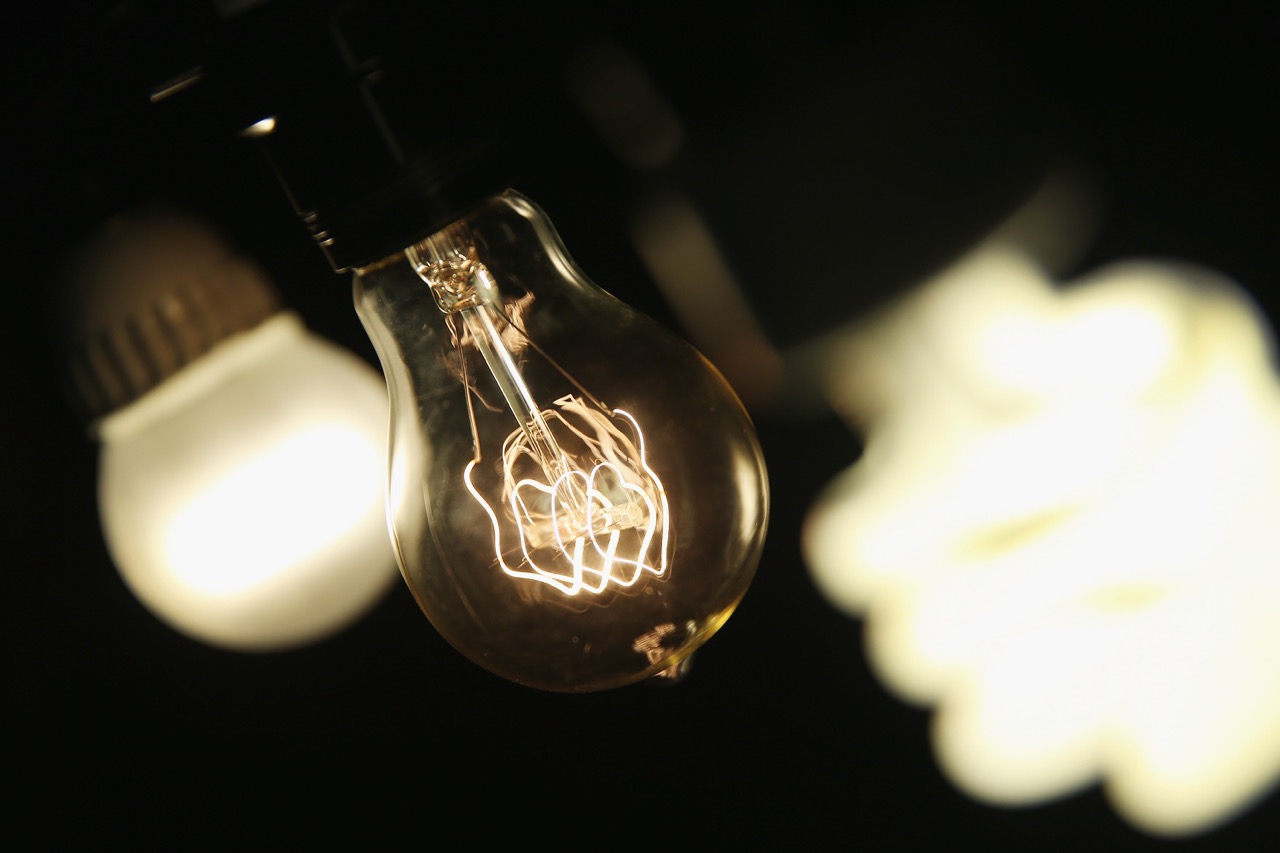

Articles
What Gas Is Found in Light Bulbs?
Modified: January 19, 2024
Discover the gas inside light bulbs and how it affects their performance in this informative article. Learn about different gases used and their impact on brightness and lifespan.
(Many of the links in this article redirect to a specific reviewed product. Your purchase of these products through affiliate links helps to generate commission for Storables.com, at no extra cost. Learn more)
Introduction
Light bulbs are a fundamental part of our daily lives, providing us with the illumination we need for various activities. But have you ever wondered what gas is inside a light bulb? The gas filling inside a light bulb plays a crucial role in its functionality and performance. In this article, we will explore the different gases used in light bulbs, their properties, and how they contribute to creating the perfect lighting environment.
Before we dive into the details of the gases used in light bulbs, let’s take a brief look at the history of this remarkable invention.
Key Takeaways:
- The gases used in light bulbs, such as argon, nitrogen, krypton, and xenon, play a crucial role in enhancing efficiency, color rendering, and lifespan, contributing to optimal lighting experiences.
- From creating vibrant glows to ensuring high luminosity and accurate color representation, the diverse properties of gases in light bulbs offer a wide range of lighting options for various applications.
Read more: What Is A Light Bulb
History of Light Bulbs
The concept of artificial light has intrigued scientists and inventors for centuries. It was not until the late 19th century that Thomas Edison successfully developed the first practical incandescent light bulb. Edison’s invention revolutionized the way we light our homes and has since paved the way for various lighting technologies.
Early light bulbs consisted of a carbon filament inside a glass enclosure. The filament would emit light when heated by an electrical current passing through it. However, during the early phases of light bulb development, the absence of a controlled atmosphere inside the bulb hindered its efficiency and lifespan.
Structure of a Light Bulb
To better understand the role of gases in light bulbs, let’s briefly examine the structure of a typical incandescent light bulb:
- Glass Enclosure: The outer shell of a light bulb is commonly made of glass, which provides both protection and transparency.
- Electrical Contacts: At the base of the bulb, there are electrical contacts that allow the bulb to be connected to a power source.
- Filament: The filament is usually made of tungsten and is the central component of the light bulb. It emits light when heated by an electric current.
- Gas Filling: The space inside the bulb is filled with a specific gas or a combination of gases, which significantly impacts the bulb’s performance.
Gas Filling Process
The gas filling process is a critical step in the manufacturing of light bulbs. It involves evacuating the air from the bulb and replacing it with a specific gas mixture. This process is essential as it helps to increase the bulb’s lifespan, prevent filament degradation, and enhance the quality of light emitted.
The gas filling is typically carried out in a controlled environment to ensure the precise composition of gases. Once the desired gas mixture is achieved, the bulb is sealed to maintain the gas pressure and prevent any external contaminants from entering.
Key Takeaways:
- The gases used in light bulbs, such as argon, nitrogen, krypton, and xenon, play a crucial role in enhancing efficiency, color rendering, and lifespan, contributing to optimal lighting experiences.
- From creating vibrant glows to ensuring high luminosity and accurate color representation, the diverse properties of gases in light bulbs offer a wide range of lighting options for various applications.
Read more: What Is A Light Bulb
History of Light Bulbs
The concept of artificial light has fascinated scientists and inventors for centuries. However, it wasn’t until the late 19th century that the development of practical incandescent light bulbs revolutionized the way we illuminate our surroundings. The journey of light bulb invention began long before Thomas Edison came into the picture. In the early 1800s, inventors such as Humphry Davy and Warren de la Rue were experimenting with various materials and methods to create artificial light. Davy used charcoal sticks to produce a glowing arc of light, while de la Rue utilized a coiled platinum filament. However, these early attempts were neither efficient nor long-lasting. It was Thomas Edison who made significant strides in light bulb technology. In 1879, Edison successfully developed a practical incandescent light bulb using a carbonized bamboo filament. This groundbreaking invention marked a turning point in human history, as it paved the way for widespread electrification and transformed the way we live and work. The early incandescent bulbs developed by Edison had a relatively short lifespan, lasting only a few hundred hours. Over the years, numerous improvements were made to increase the efficiency and longevity of light bulbs. One of the most crucial advancements was the introduction of tungsten filaments, which replaced the carbonized bamboo filaments. In 1910, William D. Coolidge created a method to produce tungsten filaments by using a powdered form of tungsten in a coiled wire. This innovation significantly improved the light bulb’s durability and increased its lifespan, making it a more reliable lighting source. Throughout the 20th century, light bulb technology continued to evolve. Manufacturing processes were refined, and new types of bulbs were introduced, including fluorescent and compact fluorescent bulbs (CFLs). These energy-efficient alternatives provided longer lifespans and reduced energy consumption compared to traditional incandescent bulbs. In recent years, there has been a rapid advancement in light-emitting diode (LED) technology. LEDs are highly efficient, long-lasting, and environmentally friendly. They have now become the preferred choice for lighting applications in various settings, from homes to commercial buildings. The history of light bulbs is a testament to human ingenuity and our constant quest for better lighting solutions. From the early experiments of Davy and de la Rue to the breakthroughs of Edison and beyond, the evolution of light bulbs has illuminated our world and shaped our modern civilization.
Structure of a Light Bulb
To better understand the role of gases in light bulbs, it’s important to have a basic understanding of the structure of a typical incandescent light bulb. While there are various types and designs of light bulbs, we will focus on the structure of a traditional incandescent bulb, which is the most common and recognizable type.
Here are the main components of a typical incandescent light bulb:
- Glass Enclosure: The outer shell of a light bulb is made of glass, which provides both protection and transparency. The glass enclosure is carefully crafted to withstand the high temperatures generated by the filament and to allow the emitted light to pass through efficiently.
- Electrical Contacts: At the base of the bulb, there are electrical contacts that allow the bulb to be connected to a power source. These contacts provide the necessary electrical connection for the current to flow through the filament.
- Filament: The filament is the heart of a light bulb. It is usually made of tungsten, a metal with a high melting point and excellent electrical conductivity. The filament is coiled or looped inside the bulb and is responsible for producing light when an electric current flows through it. As the filament heats up, it begins to emit a bright, visible light.
- Gas Filling: The space inside the bulb is filled with a specific gas or a combination of gases. The gas inside the bulb plays a crucial role in creating the right conditions for the filament to glow and extend the lifespan of the bulb. The choice of gas depends on factors such as heat dissipation, energy efficiency, and light quality.
Now let’s delve into the role of the gas filling inside a light bulb. The primary function of the gas inside the bulb is to prevent the filament from burning out quickly. When a light bulb is filled with gas, it helps control the evaporation of the filament material. This controlled evaporation minimizes the blackening of the bulb’s glass and extends the life of the filament.
In addition to prolonging the life of the filament, the gas filling also contributes to the color temperature and overall quality of the light emitted by the bulb. Different gases have different light-emitting properties, which can affect the color rendering index (CRI) and the perceived color temperature of the light. The gas filling is carefully selected to achieve the desired light output and color characteristics.
The gas filling process is carried out in a controlled environment during the manufacturing of the light bulb. The bulb is evacuated to remove any air or impurities that may alter the performance of the gas filling. Once the vacuum is achieved, the desired gas or gas mixture is introduced into the bulb, and then it is sealed to maintain the gas pressure and prevent contamination from outside elements.
Understanding the structure and gas filling of a light bulb allows us to appreciate the intricate engineering behind this everyday device. The combination of the filament, glass enclosure, electrical contacts, and gas filling work together to produce the glowing light that brightens our lives.
Gas Filling Process
The gas filling process is a crucial step in the manufacturing of light bulbs. It involves evacuating the air from the bulb and replacing it with a specific gas or gas mixture. This process plays a significant role in improving the bulb’s performance, extending its lifespan, and optimizing the quality of light emitted.
Here is a step-by-step overview of the gas filling process:
- Bulb Manufacturing: The process begins with the fabrication of the light bulb itself. The glass enclosure, electrical contacts, and other components are manufactured and assembled to create a functional base for the gas filling.
- Evacuation: The first step in the gas filling process is the removal of air and any contaminants from inside the bulb. This is crucial to create a clean and controlled environment for the gas filling. The bulb is connected to a vacuum pump, which gradually reduces the air pressure inside the bulb. The evacuation process continues until the desired vacuum level is achieved.
- Gas Selection: Once the bulb is evacuated, the next step is selecting the appropriate gas or gas mixture for filling. The choice of gas depends on several factors, including the desired light output, color temperature, energy efficiency, and heat dissipation. Common gases used in light bulbs include argon, nitrogen, krypton, and xenon, among others. The gas selection is based on extensive research and experimentation to meet specific lighting requirements.
- Filling: After the gas selection, the bulb is ready for filling. It is essential to introduce the gas carefully to maintain the desired gas composition. This is typically done by connecting the bulb to a gas supply system, which controls the flow rate and pressure of the gas. The gas flows into the bulb through a specially designed nozzle, gradually displacing the remaining vacuum and ensuring that the desired gas mixture is achieved.
- Sealing: Once the bulb is filled with the desired gas, it needs to be sealed to maintain the gas pressure and prevent any external contaminants from entering the bulb. The sealing process involves melting the glass at the base of the bulb to create a hermetic seal or using specialized sealing materials to ensure a tight closure. The sealing methods vary depending on the bulb type and manufacturer’s specifications.
- Quality Control: After the gas filling and sealing, the light bulbs undergo quality control checks to ensure their performance and safety. These checks involve assessing the gas pressure, verifying the integrity of the seal, and conducting electrical tests to ensure proper functionality.
The gas filling process is a critical aspect of light bulb manufacturing, as it directly influences the bulb’s lifespan, light output, and overall performance. The precise control of the gas composition and pressure inside the bulb contributes to creating the optimal conditions for an efficient and long-lasting light source.
Manufacturers continually research and innovate to optimize the gas filling process and enhance the performance of light bulbs. By refining the gas selection, filling techniques, and quality control measures, they strive to deliver high-quality lighting solutions that meet the needs and expectations of consumers.
Common Gases Used in Light Bulbs
The gas filling inside a light bulb is a crucial factor that determines its performance and characteristics. Different gases have varying properties that impact factors such as light output, color temperature, efficiency, and longevity. Here are some of the common gases used in light bulbs:
Argon Gas:
Argon is one of the most commonly used gases in incandescent and halogen light bulbs. It is an inert gas that exhibits excellent thermal conductivity and electrical insulation properties. Argon helps to reduce filament evaporation, slowing down the bulb’s wear and prolonging its lifespan. Additionally, argon contributes to enhancing the color rendering index (CRI) and provides a more authentic color representation.
Read more: What Is CFL Light Bulb
Nitrogen Gas:
Nitrogen is another gas commonly used in light bulbs. Like argon, nitrogen is an inert gas that helps to extend the life of the filament by reducing oxidation and evaporation. It also helps to maintain a consistent pressure inside the bulb and contributes to a higher color rendering index.
Krypton Gas:
Krypton is often used in halogen light bulbs due to its excellent thermal conductivity and low thermal expansion properties. It helps to enhance the bulb’s efficiency and lifespan. Krypton gas allows the filament to operate at a higher temperature, resulting in a brighter and more efficient light output compared to other gases.
Xenon Gas:
Xenon is a noble gas that offers significant advantages for specific lighting applications. It is commonly used in high-intensity discharge (HID) lamps, such as xenon arc lamps and automotive HID headlights. Xenon gas has a high light output, excellent color temperature stability, and a longer lifespan compared to other gases. It provides a bright white light that closely resembles natural daylight.
Other Gases Used in Light Bulbs:
In addition to the gases mentioned above, there are other gases used in specialized light bulbs or specific lighting applications. For example:
- Helium: Helium is used in certain specialized lamps, such as helium-filled neon lamps, where its low density allows for more precise control of the discharge.
- Mixed Gas: Sometimes, light bulbs can contain a mixture of different gases to achieve specific lighting characteristics. The gas mixture can be tailored to optimize color temperature, efficiency, and longevity.
The choice of gas depends on various factors, including the desired light output, color temperature, energy efficiency, and intended application. Manufacturers carefully select the gas filling to ensure that the end product meets the specific requirements and provides optimal lighting performance.
By understanding the role of different gases in light bulbs, we can appreciate the science behind creating the perfect lighting environment. The precise combination of gases contributes to achieving efficient, long-lasting, and visually pleasing illumination for a wide range of applications, from residential lighting to industrial and commercial settings.
Read more: What Are The Colors Of A Light Bulb
Argon Gas
Argon gas is commonly used in light bulbs, particularly in incandescent and halogen bulbs. As an inert gas, argon offers several benefits that contribute to the overall performance and longevity of the bulb.
Properties of Argon Gas:
Argon is a colorless and odorless gas that is widely abundant in the Earth’s atmosphere. It is classified as a noble gas, which means it is chemically inert and does not readily react with other elements. Some of the notable properties of argon include:
- Thermal Conductivity: Argon has high thermal conductivity, allowing it to efficiently transfer heat away from the filament. This helps to cool down the filament and reduce evaporation, resulting in a longer lifespan for the bulb.
- Electrical Insulation: Argon acts as an excellent electrical insulator, preventing the undesired flow of electricity and ensuring safe operation of the bulb.
- Inertness: Being chemically inert, argon does not react with the hot filament or other materials inside the bulb. This inertness helps to minimize filament degradation and extend the bulb’s overall life expectancy.
Role of Argon in Light Bulbs:
The inclusion of argon gas in light bulbs serves multiple purposes:
1. Reducing Filament Evaporation: When a light bulb operates, the filament heats up and starts to emit light. However, the high temperatures can cause the filament material to evaporate gradually. The presence of argon gas reduces this evaporation process, slowing down the degradation of the filament and prolonging the bulb’s lifespan. 2. Improving Color Rendering: Argon gas contributes to a higher Color Rendering Index (CRI) in light bulbs. CRI refers to the ability of a light source to accurately reproduce the colors of objects compared to a natural light source. By enhancing the CRI, argon gas helps to provide a more accurate and realistic color representation. 3. Enhancing Efficiency: By effectively dissipating heat from the filament, argon gas helps to improve the overall efficiency of the light bulb. This results in better energy utilization and reduces wasted heat production. 4. Stabilizing Pressure: Argon gas helps to stabilize the pressure inside the light bulb. By maintaining a consistent pressure, the bulb can operate efficiently and minimize the risk of premature failure.
Other Applications of Argon Gas:
Beyond light bulbs, argon gas is widely used in various other applications, such as:
– Welding: Argon is commonly used as a shielding gas in welding processes to prevent the oxidation of the metal being welded. – Scientific and Industrial Purposes: Argon is utilized in laboratory settings as a protective atmosphere for sensitive experiments and as an inert carrier gas in gas chromatography. – Insulation: Argon is sometimes used as an insulating medium in double-paned windows to improve thermal efficiency. – Food Preservation: In the food industry, argon can be used to displace oxygen to extend the shelf life of perishable products.
Argon gas plays a vital role in light bulbs, offering a range of benefits that improve their performance and longevity. Its thermal conductivity and electrical insulation properties, along with its inertness, contribute to maintaining the integrity of the filament and enhancing the quality of light emitted by the bulb.
Read more: What Is A Flood Light Bulb?
Nitrogen Gas
Nitrogen gas is frequently used in light bulbs due to its inert properties and ability to improve the bulb’s performance and lifespan. Let’s explore the role and benefits of nitrogen gas in light bulbs.
Properties of Nitrogen Gas:
Nitrogen is an odorless, colorless, and tasteless gas that makes up around 78% of Earth’s atmosphere. It is classified as an inert gas, meaning it does not readily react with other elements or substances. Some notable properties of nitrogen gas include:
- Inertness: Nitrogen gas is chemically inactive, making it an excellent choice for creating a stable environment inside a light bulb. It does not react with the filament or other materials, minimizing the degradation of the bulb’s components.
- Thermal Stability: Nitrogen has good thermal stability, allowing it to withstand the high temperatures generated by the bulb without undergoing significant changes in properties.
- Purity: Nitrogen gas used in light bulbs is typically highly pure, ensuring that there are no contaminants or impurities that could affect the bulb’s performance.
Role of Nitrogen in Light Bulbs:
Nitrogen gas serves several key functions in light bulbs:
1. Risk Reduction: Nitrogen gas helps to reduce the risk of filament degradation and premature failure. The presence of nitrogen creates a stable environment inside the bulb, preventing the oxidation and evaporation of the filament material. This helps to prolong the life of the bulb and maintain its performance over time. 2. Oxidation Prevention: Nitrogen gas acts as a protective barrier, preventing the filament and other internal components of the bulb from reacting with oxygen in the air. By minimizing oxidation, nitrogen helps to preserve the integrity of the bulb and maintain its efficiency. 3. Pressure Regulation: Nitrogen gas helps to maintain a consistent pressure inside the bulb. This stable pressure is crucial for the proper functioning of the bulb and ensures that the electrical current is distributed evenly throughout the filament. 4. Improved Color Rendering: The presence of nitrogen gas can contribute to a higher Color Rendering Index (CRI) in light bulbs. CRI measures the ability of a light source to reproduce colors accurately compared to natural light. By enhancing the CRI, nitrogen gas can help create a more vibrant and true-to-life lighting environment.
Other Applications of Nitrogen Gas:
Beyond light bulbs, nitrogen gas finds a wide range of applications, including:
– Food Packaging: Nitrogen gas is often used as a packaging gas in the food industry to extend the shelf life of perishable products. It helps to create a modified atmosphere inside the packaging, reducing spoilage and maintaining freshness. – Electronics Manufacturing: Nitrogen is utilized in electronic manufacturing processes to create an inert atmosphere during soldering and preventing oxidation of sensitive components. – Pharmaceuticals: Nitrogen gas is used within the pharmaceutical industry for various applications, such as purging containers, blanketing powder materials, and preventing oxidation during production and storage. – Tire Inflation: Nitrogen gas is sometimes used to inflate car tires. It offers better pressure retention compared to air, resulting in more consistent tire pressure and improved safety.
In light bulbs, nitrogen gas plays a vital role in maintaining the bulb’s performance, reducing filament degradation, and ensuring a longer lifespan. Its inertness and ability to regulate pressure create a stable environment, allowing the bulb to operate efficiently and produce high-quality light.
Read more: What Is Type A Light Bulb
Krypton Gas
Krypton gas, a noble gas, is commonly used in various types of light bulbs, particularly in halogen bulbs. Its unique properties make it an ideal gas for enhancing the performance and efficiency of these bulbs. Let’s explore the role and benefits of krypton gas in light bulbs.
Properties of Krypton Gas:
Krypton is a colorless, odorless, and tasteless gas that belongs to the noble gas group on the periodic table. Some key properties of krypton gas include:
- Thermal Conductivity: Krypton has higher thermal conductivity compared to other noble gases, allowing it to efficiently transfer heat away from the filament in a light bulb. This property helps to prevent the filament from overheating and enhances the bulb’s overall performance.
- Low Thermal Expansion: Krypton gas has a low coefficient of thermal expansion, meaning it expands and contracts less with temperature changes. This characteristic helps to minimize stress on the bulb’s components, increasing its durability and lifespan.
- Chemical Inertness: Like other noble gases, krypton is chemically inert, meaning it does not readily react with other elements or compounds. This inertness ensures that krypton gas does not interfere with or degrade the other materials inside the light bulb.
Role of Krypton in Light Bulbs:
Krypton gas offers several benefits when used in light bulbs, particularly in halogen bulbs:
1. Increased Efficiency: Due to its higher thermal conductivity, krypton gas allows the filament in a halogen bulb to operate at higher temperatures without significantly deforming or reducing the bulb’s overall lifespan. This higher operating temperature results in increased light output and improved energy efficiency. 2. Brighter Light: The use of krypton gas can enhance the brightness of the light emitted by the bulb. By enabling the filament to reach higher temperatures, krypton gas promotes more intense thermal radiation, resulting in a brighter illumination. 3. Improved Color Temperature Stability: Krypton gas helps maintain a stable color temperature in halogen bulbs. Color temperature refers to the perceived color of the light emitted by the bulb. By minimizing color temperature fluctuations, krypton gas ensures a consistent and desirable lighting environment. 4. Longer Lifespan: The combination of krypton gas’s properties, including its low thermal expansion and efficient heat dissipation, contributes to extending the lifespan of the bulb. The improved durability helps to reduce filament evaporation and maintain the bulb’s performance over time.
Other Uses of Krypton Gas:
Beyond light bulbs, krypton gas finds application in various other fields:
– Laser Technology: Krypton gas is utilized in lasers to produce specific wavelengths of light for medical, scientific, and industrial purposes. – Thermal Windows: Krypton-filled double-pane windows offer superior insulation properties and help improve energy efficiency in buildings. – Research and Analysis: Krypton is used as a tracer gas in environmental studies, leak detection, and other analytical applications.
Krypton gas’s unique properties make it a valuable component in light bulbs, especially in halogen bulbs. Its thermal conductivity, low thermal expansion, and chemical inertness contribute to the bulbs’ efficiency, brightness, color stability, and longevity. By harnessing the benefits of krypton gas, light bulb manufacturers can create high-performance lighting solutions for various applications.
Read more: What Are Light Bulbs Made Of?
Xenon Gas
Xenon gas, a noble gas, is commonly utilized in specialized lighting applications, particularly in high-intensity discharge (HID) lamps, xenon arc lamps, and automotive HID headlights. Xenon gas offers unique properties that make it an excellent choice for these lighting systems. Let’s explore the role and benefits of xenon gas in light bulbs.
Properties of Xenon Gas:
Xenon is a colorless, odorless, and dense gas that belongs to the noble gas group on the periodic table. Some key properties of xenon gas include:
- High Light Output: Xenon gas has a higher light output compared to other noble gases. It produces a bright and intense light, making it ideal for applications where high luminosity is required.
- Stable Ionization: Xenon gas maintains a stable ionization process, which allows for efficient operation in HID lamps and xenon arc lamps. The stability of the ionization process contributes to consistent light output and color temperature.
- Color Rendering: Xenon gas provides excellent color rendering capabilities. It produces a white light that closely resembles natural daylight, making it suitable for applications where accurate color representation is essential.
- Long Lifespan: Xenon gas helps to increase the lifespan of the bulb by reducing filament evaporation and minimizing the degradation of bulb components. This extended lifespan allows for reliable and long-lasting performance.
Role of Xenon in Light Bulbs:
Xenon gas offers several benefits when used in light bulbs, particularly in HID lamps and xenon arc lamps:
1. Bright and Intense Illumination: Xenon gas produces a highly bright and intense light output, making it ideal for applications that require high luminosity. This property is especially valuable in automotive headlights and outdoor lighting scenarios where visibility and safety are critical. 2. Enhanced Color Rendering: With its excellent color rendering capabilities, xenon gas closely replicates natural daylight. This characteristic is particularly important in settings such as photography studios, movie theaters, and medical examinations, where accurate color representation is essential. 3. Improved Efficiency: HID lamps utilizing xenon gas offer higher energy efficiency compared to traditional incandescent bulbs. This increased efficiency results in reduced power consumption, making them a more environmentally friendly lighting option. 4. Extended Lifespan: The properties of xenon gas, such as its stable ionization and reduced filament evaporation, contribute to a longer lifespan of the bulb. This extended lifespan ensures that the bulb maintains its performance and brightness over a prolonged period.
Other Uses of Xenon Gas:
Beyond lighting applications, xenon gas has various other uses:
– Medical Imaging: Xenon gas is utilized in medical imaging techniques, such as xenon-enhanced computed tomography (CT) scans and magnetic resonance imaging (MRI). – Laser Technology: Xenon gas is employed in high-powered lasers for scientific research, fusion research, and industrial applications. – Space Exploration: Xenon gas is used as a propellant in ion thrusters for spacecraft propulsion.
Xenon gas’s unique properties, including its high light output, excellent color rendering, and extended lifespan, make it a valuable component in specialized lighting systems. From automotive headlights to high-powered lasers, xenon gas ensures enhanced visibility, accurate color representation, and efficient operation in a range of applications.
Read more: What Kind Of Light Bulb For Outdoor Light
Other Gases Used in Light Bulbs
While argon, nitrogen, krypton, and xenon are among the most commonly used gases in light bulbs, there are several other gases that find application in specialized lighting systems. Let’s explore some of the other gases used in light bulbs and their unique characteristics.
Neon Gas:
Neon gas is well-known for its use in neon signs, where it produces a vibrant, colorful glow. However, neon gas also finds application in some specialty lighting bulbs. It emits a distinct red-orange light and is often used for decorative purposes or to create a specific atmosphere in lighting installations.
Mercury Vapor:
Mercury vapor lamps were once commonly used for street lighting and industrial applications. These lamps use mercury vapor as the primary gas, and when an electric arc is passed through it, it emits an intense blue-green light. However, due to environmental concerns regarding mercury, the use of mercury vapor lamps has significantly decreased in recent years.
Halogen Gases:
In halogen lamps, such as quartz halogen bulbs, a small amount of a halogen gas is added to the bulb to enable a halogen cycle. The most commonly used halogens are iodine or bromine. The halogen gas helps to prevent the blackening of the bulb’s envelope by redepositing evaporated tungsten back onto the filament. This process allows for higher operating temperatures, increased light output, and longer lifespan compared to traditional incandescent bulbs.
Read more: What Is A PAR Light Bulb
Carbon Dioxide:
Carbon dioxide gas is used primarily in firefly light bulbs or novelty lighting products. These bulbs contain a small amount of carbon dioxide gas that allows for a fluorescent glow, mimicking the illuminating effect of fireflies. Carbon dioxide does not produce heat or emit a substantial amount of light, but it creates a visually appealing illumination for unique decorative purposes.
Hydrogen:
Hydrogen gas is utilized in specific types of discharge lamps, such as hydrogen-filled incandescent bulbs. These bulbs contain a mixture of hydrogen and other gases, resulting in a unique, unconventional light source. Hydrogen-filled bulbs are often used in scientific applications, where the emitted light spectrum is critical for specific experiments or research purposes.
It’s important to note that the use of some of these gases in light bulbs may vary depending on regional regulations and environmental considerations. Additionally, advancements in lighting technology and the focus on energy efficiency have led to a shift towards more specialized gases like noble gases (argon, nitrogen, krypton, xenon) for most lighting applications.
By exploring these other gases used in light bulbs, we can appreciate the diverse range of lighting options available. Each gas offers unique properties that contribute to creating specific lighting effects, colors, and atmospheres in various settings, from decorative lighting to scientific research.
Conclusion
The gases used in light bulbs play a critical role in their functionality, performance, and overall lighting experience. Through the years, innovators and scientists have experimented with various gases to optimize the efficiency, color rendering, and lifespan of light bulbs. From argon and nitrogen to krypton and xenon, each gas brings its own set of advantages to different types of lighting technologies.
Argon, known for its thermal conductivity and electrical insulation properties, helps minimize filament evaporation and enhances color rendering in incandescent and halogen bulbs. Nitrogen, another inert gas, reduces the risk of oxidation and extends the lifespan of the bulb, while also contributing to consistent pressure regulation and improved color rendering.
Krypton, with its high thermal conductivity and low thermal expansion, allows halogen bulbs to operate at higher temperatures, resulting in brighter and more efficient illumination. Xenon gas, on the other hand, produces a highly intense light output and accurate color representation, making it suitable for specialized applications such as automotive HID headlights and xenon arc lamps.
While these gases are commonly used in light bulbs, there are other gases with unique properties that find application in specific lighting systems. Neon gas provides a vibrant glow for decorative purposes, mercury vapor creates intense blue-green light (although its use has diminished due to environmental concerns), and halogen gases are instrumental in maintaining higher operating temperatures and increasing the lifespan of halogen lamps.
It is important to note that the choice of gas depends on factors such as energy efficiency, heat dissipation, color temperature, and specific lighting requirements. Manufacturers carefully select the appropriate gas or gas mixture to optimize overall performance.
The continuous research and development in lighting technology have led to advancements in energy-efficient options such as LEDs, where gases are not specifically used in the same manner as traditional incandescent bulbs. However, understanding the role of gases in light bulbs allows us to appreciate the intricate engineering and scientific principles behind creating efficient, long-lasting, and visually appealing lighting solutions.
As we continue to evolve and embrace new lighting technologies, the gases used in light bulbs remain a vital component in achieving the desired lighting effects and optimizing our illumination needs. The ongoing quest for improved lighting performance and energy efficiency ensures that gases will continue to play a crucial role in the future of lighting.
Frequently Asked Questions about What Gas Is Found In Light Bulbs?
Was this page helpful?
At Storables.com, we guarantee accurate and reliable information. Our content, validated by Expert Board Contributors, is crafted following stringent Editorial Policies. We're committed to providing you with well-researched, expert-backed insights for all your informational needs.
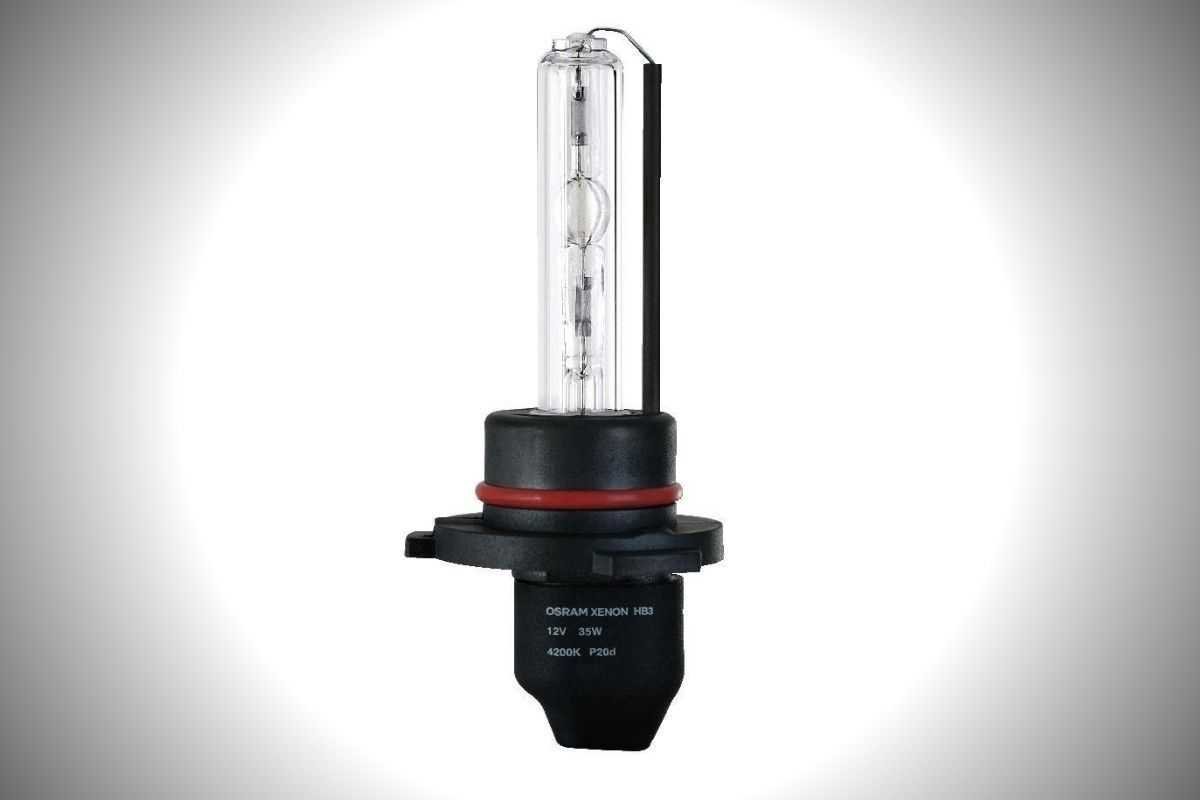


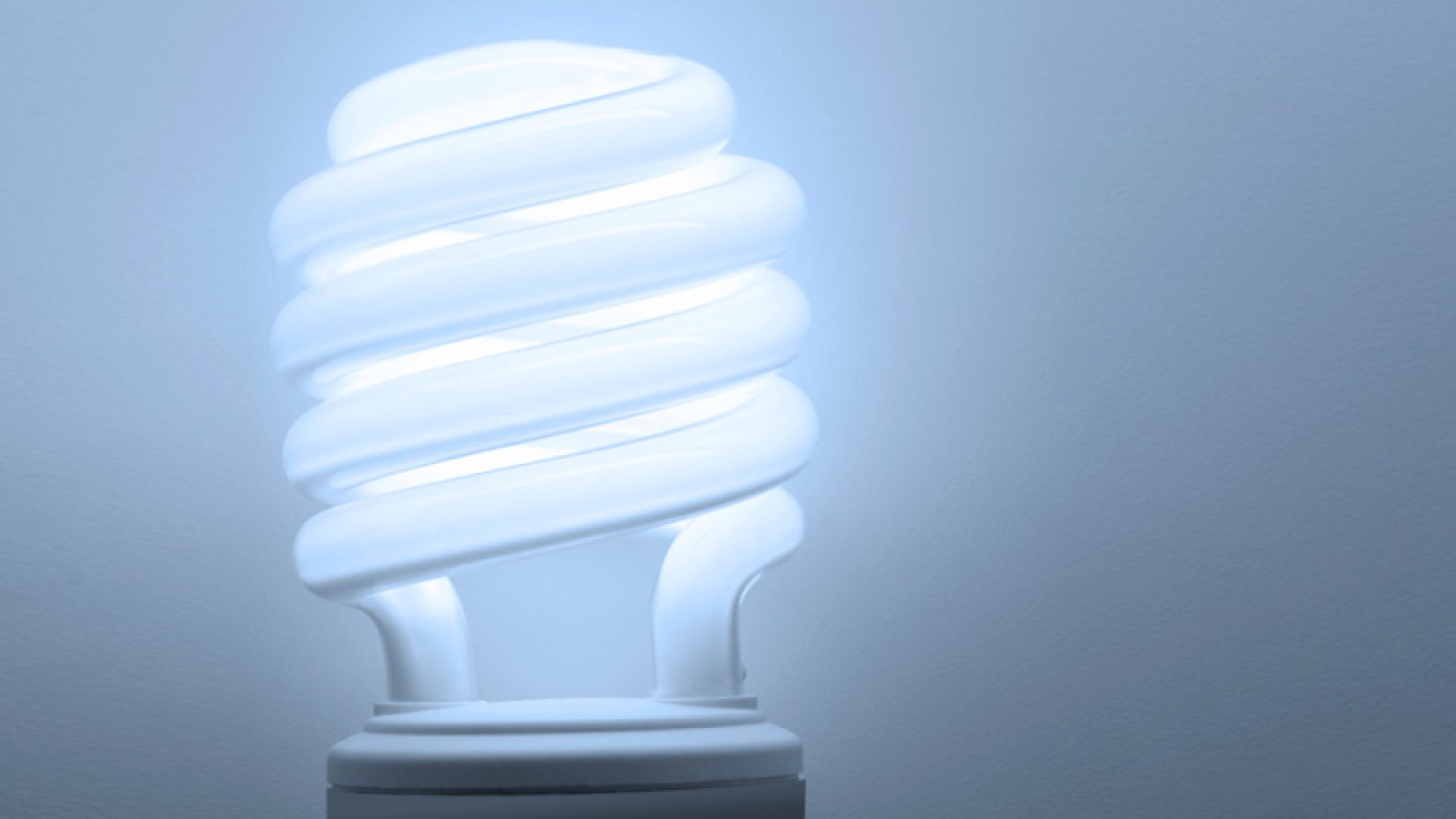
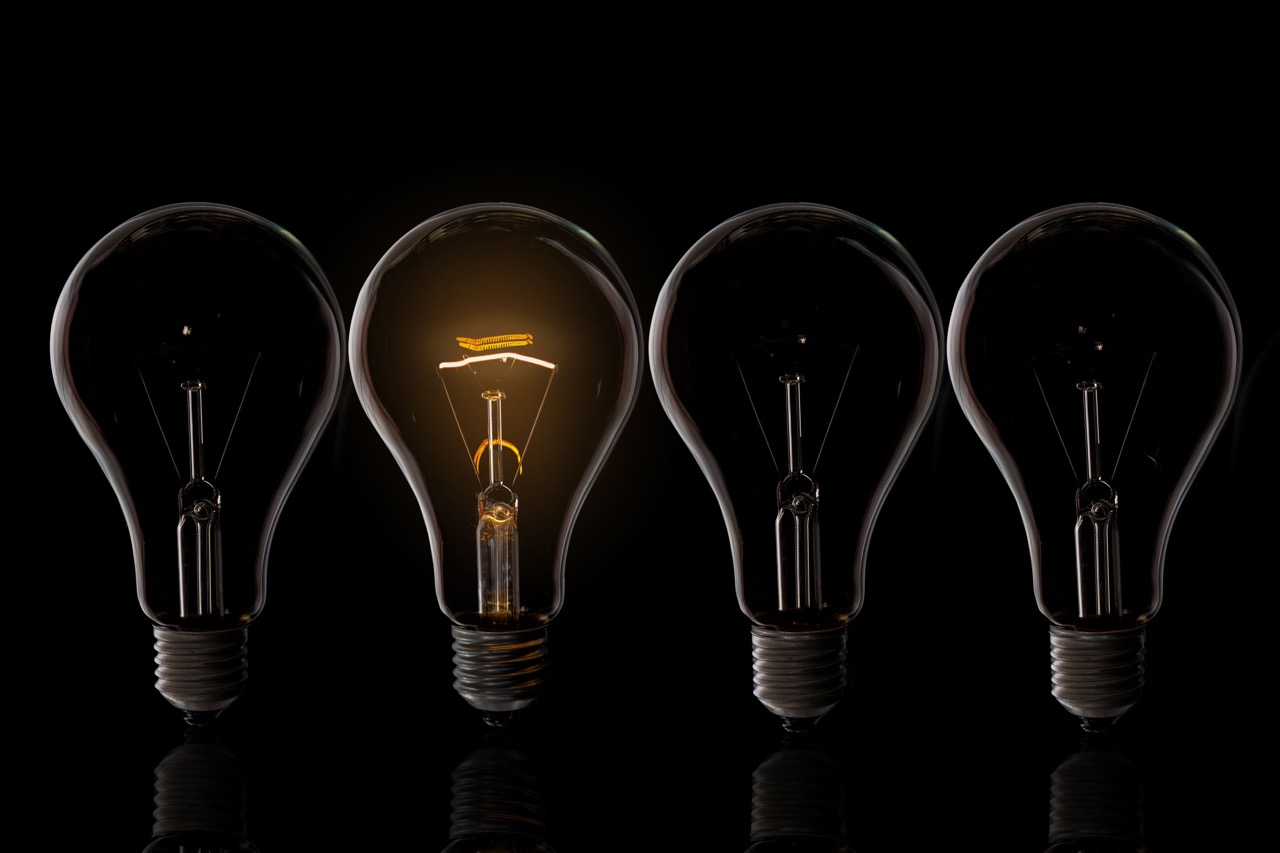

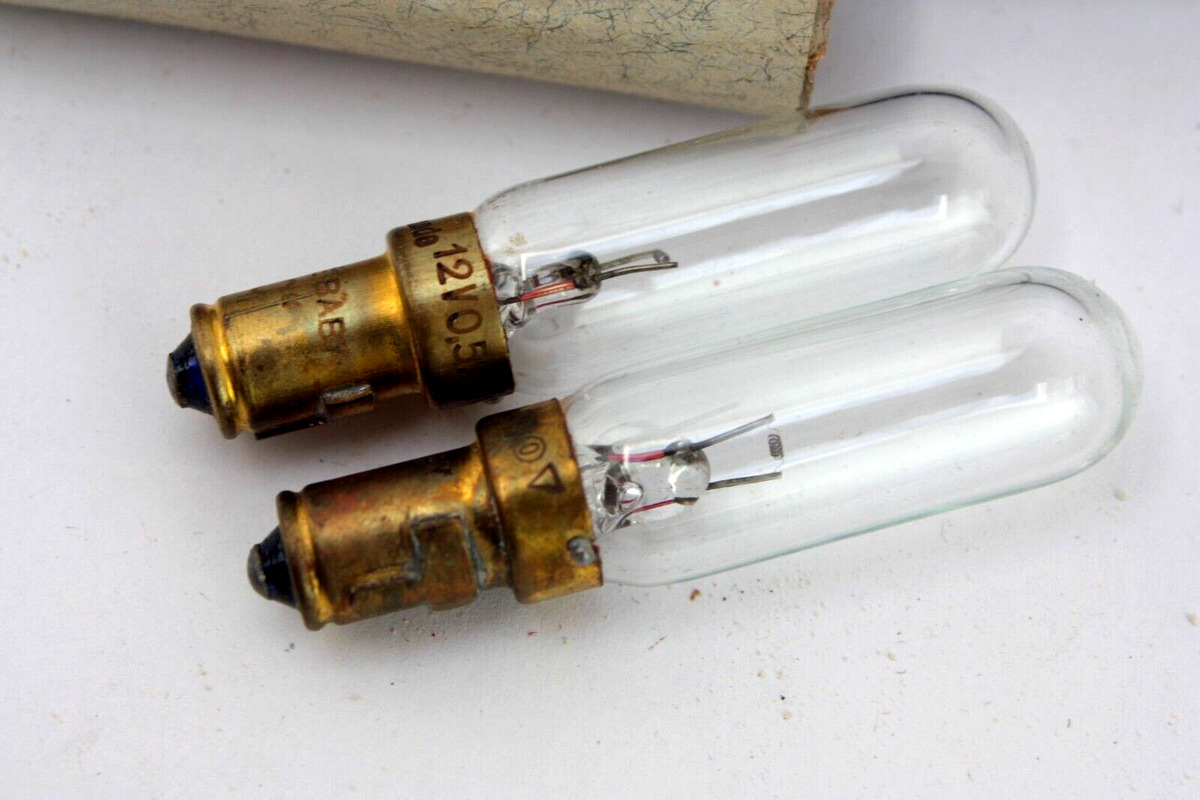

0 thoughts on “What Gas Is Found in Light Bulbs?”